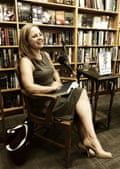Cli-Fi refers to “climate fiction;” it is a term coined by journalist Dan Bloom. These are fictional books that somehow or someway bring real climate change science to the reader. What is really interesting is that Cli-Fi books often present real science in a credible way. They become fun teaching tools. There are some really well known authors such as Paolo Bacigalupi and Margaret Atwood among others. A list of other candidate Cli-Fi novels was provided by Sarah Holding in the Guardian.
What makes a Cli-Fi novel good? Well in my opinion, it has to have some real science in it. And it has to get the science right. Second, it has to be fun to read. When done correctly, Cli-Fi can connect people to their world; it can help us understand what future climate may be like, or what current climate effects are.
As I write this, we are getting a steady stream of stories out of Puerto Rico the island was devastated by Hurricane Maria. It is hard to imagine the devastation, what life is like without electricity, food, or water. What is life like on an island of 3 million people, each fending for themselves, just trying to survive.
Another thing that is hard to imagine is the future. What will the world be like decades from now when Earth temperatures have continued to rise? What will agriculture be like? What will coastal communities be like? What will international relations and armed conflict be like?
It is also hard to imagine what living a subsistence agriculture life is like, today. What happens to lives and communities when the rains change, or don’t come at all? What would that world look like?
Cli-Fi stories are vehicles that can help us imagine. The authors get us to think about these what ifs – these future Earths. Cli-Fi novels (and movies for that matter) can make experiences far more real than endless graphs or plots of temperature variations. And that, perhaps, is the most important contribution Cli-Fi can make to the discussion of climate change in our everyday lives. These authors get us to imagine what experiences are or would be like.
One recent example of Cli-Fi literature is South Pole Station by Ashley Shelby. In this book we follow an artist, Cooper Gosling, who is traveling to a research location on Antarctica to create paintings. Yes, an artist is sent to live with researchers and crew – with funding from the National Science Foundation. After arriving at the South Pole, Cooper has to become acquainted with the strange social system that exists there. Ashley writes the book in such a way that you actually feel you are huddled in the cold with her and her co-workers.

Cooper doesn’t uplift her life to travel to the South Pole on a whim. It is an outcome of a family tragedy and a history that involves romanticized stories of adventure to this remote place. While Cooper is stationed at the pole, she hears news that a radical scientist is coming. This scientist claims that climate change is a hoax – and his presence further upsets the delicate social balance that exists at the research location.
You see the expected reaction of the regular scientists when this climate denier arrives to perform his research. There is backstabbing and sabotage where in the end we find Copper helping this climate-denying scientist carry out an experiment. The experiment goes awry and there are repercussions all the way back to the US mainland, and the halls of Congress.
I liked this book because I don’t like fiction. That is, I find it really hard to get into fictional books because my mind always runs back to science, or my email, or papers to grade, or kids’ soccer practices to get to. I never feel like I have time to just read for fun. But this book was really engaging. It was the first fictional book in a decade that I didn’t want to put down.
It is funny with really quick-witted humor that made me laugh. At the same time, I was impressed by how I felt like I was there – working amongst the staff and scientists. I enjoyed how Ashely weaved in threads of real and accurate science. And this, perhaps, is what makes the Cli-Fi genre so important. We can unintentionally learn real science.
Ashley’s book is at the edge of this genre. It is not “dystopian” and it is not about a post-apocalyptic world resulting from climate change. It is topical and, though fiction, is as present-day as a news headline. This book is about what people, dedicated to facts, are really doing today. It doesn’t seem futuristic. It seems like we are at a point when a bunch of scientists and friends of facts could take over a research station and say, “Stop the madness!”
Salman Rushdie recently said that in the present day the country is so filled with lies and fantasy and fiction surrounding the truth, that it might require the fiction writer to plainly lay out what is reality and what is not. I think Ashley’s book fits that notion.
So, take a look at this new (newish?) form of literature. Particularly if you want a break from the usual genres. If you find something you like that I didn’t mention, please send it to me.

Comments (…)
Sign in or create your Guardian account to join the discussion